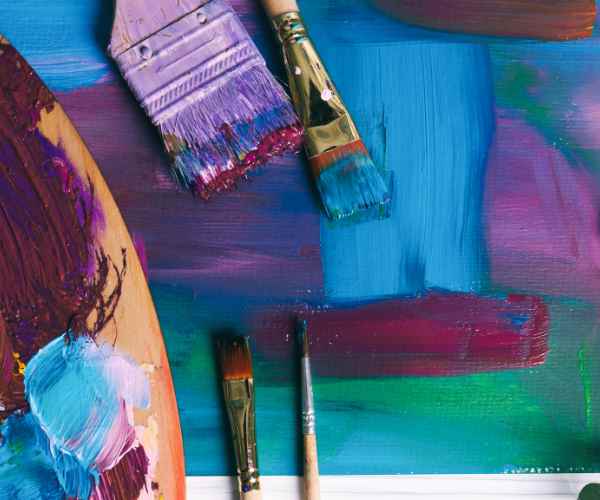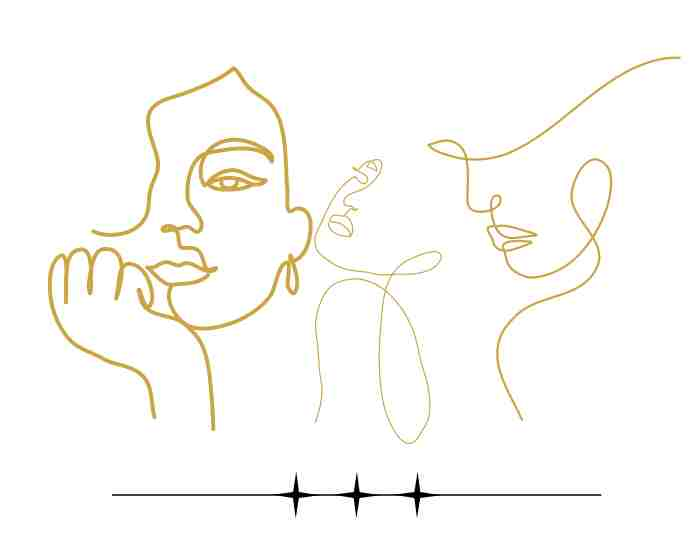Diamond painting is an interesting fusion between cross stitch and paint by numbers. It is a creative hobby which consists of embedding tiny diamond drills onto the sticky surface of the canvas in order to create a diamond art of sorts.
For an amateur diamond painting art is a great way to achieve a meditative state. It comes in handy to people who wanted to de-stress and make some beautiful artwork in the process. The best part is the achievement and the feeling of satisfaction that one gets when the art piece is completed.
For example, a beginner can practice using their basic diamond painting kit which usually has a simpler design to begin with. After mastering the simpler design, more complex designs and larger canvas can be used. These steps taken gradually can spark a greater interest and enhance one’s self confidence in their crafting skills.
What all does it include? What is diamond painting?
Bolstered by the multitude of colored diamond drills, diamond painting is set in motion by using a glue coated canvas that has already been printed. This in itself is greatly similar to diamond painting and is much easier as each drill embeds a colorful symbol onto a canvas.
The canvas for diamond painting is matched with an adhesive layer that keeps the diamond drills in position. Each pattern on the canvas represents a different color of diamond drill. The method used in construction enhances the overall appearance and even improves on the accuracy level of the finished piece. For instance, a canvas size of 30×40 cm could use about 20 symbols each having its own color making it more colorful and pleasing to the eye.
Primary tools and materials required
Most diamond painting kits will have these items included:
- Base fabric: This is a type of canvas that has a pattern printed on and a stick patch which the diamonds can stick to.
- Diamond Drills: These small gems portray the pixels that form the picture.
- Diamond Pen or Applicator: This is an instrument that has been made to assist in picking up diamonds and placing them on the painting.
- Wax: This is a tool that is placed on the pencil to aid it in picking more diamonds.
- Tray: This is a small vessel that holds the diamonds and makes it easier to work with them.
Other accessories like tweezers can assist with focusing more accurately when placing diamonds and a light pad can improve the clarity of symbols on the canvas for easier recognition.
Picking Out Your First Diamond Painting Kit – Sourcing and Setting Up Guide
There are some aspects that require kind of deliberation when selecting a diamond painting kit, including but not limited to:
- Complexity of the Design chosen: Try to go for a design more in tandem with your design expertise. Newcomers to the world of painting tend to go for ease, so simpler designs with a limited number of colors and bigger diamonds are ideal for them.
- Size of Canvas: Bigger canvases quite clearly tend to be harder but they also come with a metric ton of opportunities for detail. In contrast, dealing with smaller canvases is significantly easier, allowing the user to finish the final product quicker.
- Drills To Be Used: Kits provide round shaped diamonds and square drills alike. As a rule of thumb, it’s safe to say that round diamonds are much easier for newcomers due to them being not as demanding in terms of placement accuracy but they do lack the polish square drills do.
A primer example would be, A novice might elect to go with a 20×20 dual diamonds canvas for an easily implementable flower stencil, but with time they can implement more complex tooling such as 40×60 dual drills canvas with square stencils.
The Beginner’s Guide to Diamond Painting – Tips and Tricks – The Setup
To make the most out of your diamond painting, first start by finding a set surface with ample light, this will allow you a smoother experience to painting and tending your diamond. Now experiencing a properly organized workspace leads to a marked enhancement in both your comfort and overall efficiency whilst working on your diamond cutting project.
Good Lighting
Using a light pad or an adjustable lamp will enhance your diamond painting experience providing great clarity over the canvas while also alleviating any strain on your eyes.
Flat Surface
A sturdy surface such as a table or a desk will help keep the canvas straight and eliminate any shifting or bending of the canvas making the diamond placement easier.
Using both a strong adjustable light and a light pad can aid the painting process by increasing visibility over the canvas.
For Your First Diamond Painting
Follow these steps to achieve your first diamond painting in an effective way.
Organize Your Supplies
To begin with, eliminate unnecessary confusion by properly organizing your diamond drills by color in the appropriate trays.
Select your diamond pen or applicator
Pens can come in different styles and shapes along with, different applicators that can suit your preferences, choose the best fit you think is most comfortable.
Obey the Guidelines: Keep to the detailed steps outlined in your diamond painting instruction guide. This helps identify where to begin painting and what the rest of the symbols on the canvas mean.
For example, there are some tools that will help you in the process, such as placing the diamonds in a tray and applying them on the canvas using a diamond applicator.
Attaching the diamonds
Placing the diamonds on the canvas is perhaps one of the most important stages in making your diamond art.
- Employ the Diamond Applicator: A diamond applicator facilitates accurate positioning of the diamonds on the sticky surface. . Place the diamond drills on the canvas until the adhesive holds them in place.
- Do not apply excessive force: Too much pressure results in damages to the canvas or displaces the diamonds. Just enough pressure has to be applied to ensure the diamonds are properly secured.
For instance, a gentle touch should be used when applying every diamond so that those already placed do not get moved and that a clean finish is maintained.
Completing Your Artwork
Now that your diamond painting is complete, allow us to guide you to the effective practices that will maintain and display your art piece:\
Use Protective Plastic: Use protective plastic on top of the diamond painting to prevent it from any unwanted elements. It acts as a sheet for the diamonds in addition to making sure the design is made well.
Frame Your Art: Get the ideal frame that goes well with not only the size of the diamond painting, but also its design. Canvas linking makes the diamond painting ready to be showcased to the world,
The use of a frame can help protect the canvas and make it look stunning while also making it safe to be displayed in public.\
Cost-effective methods for Beginners- Tips and Tricks
Problems are a part of everything, and diamond painting has its fair share of problems too, especially for something that a newbie would want to try spending time on. Here’s how one can mitigate certain issues and try to avoid them
Wrong Placement of Diamonds: Before placing a diamond you should double check the color code chart and the symbols available over the canvas for placing each diamond. This can lower the risk for errors by utilizing a diamond pen with a sticky tip.
Chapping of Diamonds: Overlapping diamonds can cause huge issues—the symbols blocking the incorrect placement can also be a major hindrance—you can easily resolve this problem by regularly checking your work progress and any necessary adjustments.
For example, using a magnifying glass to look at the canvas more closely can also make it easier to locate any misplaced diamonds before they cause further complications.
Maintaining Your Diamond Painting Supplies
A good rhythm in your diamond painting process can be achieved only by keeping your supplies in check.
- Organize Your Tools: Store your diamond tools appropriately in different containers so as to ward off spills and confusion. Each type of diamond color should be kept in a container with a labeled tray or bag.
- Store Correctly: In order to shield your diamond painting kits from dampness and heat that could damage the adhesive canvas and diamond drills, make sure to store them in some cool dry area.
As an example, utilizing a tackle box that has different compartments for different diamonds may ensure that everything is tidy and easy to get to.
Do diamond painting better by attempting to use some new techniques.
Experiment with Different Methods: Don’t suffer in silence; if you’d like to boost your diamond painting skills, try different painting techniques. You may find that using an additional light pad improves your speed and accuracy when painting or that sectioning off the canvas achieves the same result.
Practice Regularly: Practicing is essential if you want to sharpen your skills and gain assurance. The higher the number of diamond painting projects you do, the more proficient you will be at your technique.
For example, diamond painting pieces with smaller canvases or simpler patterns should be tried out first by newbies as they assist with skill acquisition before engaging in diamond painting pieces with more intricate designs.
FAQs
What is the best way to store diamond painting kits?
It is essential to store your diamond painting kits in a manner that will keep all your supplies protected.
- Cool, Dry Place: Make sure to keep your diamond drills, adhesive canvas and all other materials at a cool and dry place. A wet environment damages the adhesives causing the diamonds to cluster.
- Avoid Heat and Sunlight: It is advisable to refrain from exposing your kits to face the sun directly, and other heat sources, as this can result in the warping of the canvas, and loss of stickiness of the diamonds.
- Only use sealed containers: Diamonds should be stored in sealed containers or bags to avoid mixing or being damaged.
An example could be helping you organize your diamond painting kits by optimizing their conditions placing moisture absorbent in the drawer you store them in.
How long does it normally take for a diamond painting to get finished?
Many factors play a role in determining the time it takes for a diamond painting to get completed, these are:
- Canvas Size: Large canvases with complicated patterns usually take more time to finish than the smaller sized ones.
- The complexity of the design- Patterns that are a little detailed and have multi colored diamonds or a lot of tiny ones increase the overall time significantly.
Experience: The more experience a diamond painter has, the faster they can paint, so for someone with little to no experience, it might take them a timer longer.
In the end, a diamond painting project can take a few days to a good few weeks to finish with these factors in mind:
Is diamond painting suitable for children?
Absolutely, however, a few guidelines should be followed when performing a diamond painting for the first time as a kid.
- Supervision: Have an adult supervise the child in order to prevent them from swallowing or losing a diamond which is a common occurrence.
- Simpler Designs: For kids it is advisable to go down the route of easier designs or kit to make the entire process much easier and more fun.
- Safe Materials: As a last check make sure all components and elements are safe for a kid to use and are non-toxic.
To provide you an example, a diamond painting kit that has a large and easy design can be a fun and educational practice for kids.
What issues are most common while performing a diamond painting and how to solve them?
While diamond painting seems easy enough at first, there are some issues new painters face. Luckily these problems come with solutions too.
- Diamonds Not Sticking: Make sure the diamond stickers are applied to a dry and clean surface for better adhesion. If all else fails, consider using the diamond applicator pen.
- Mistakenly Placed Diamonds: Always try to have the color chart in eye’s sight and check the symbols on the motifs to avoid placing the diamonds in the wrong spots. And take the time to revisit the guide that explains step by step how to create working scenes and images.
- Diamonds Getting Mixed Up: Rather than fumbling about with your diamonds, consider using separate containers for them or ensuring that they’re arranged neatly on trays according to color.
For instance, the symbols are clearer when you use a light pad, which helps to avoid mistakes during the painting process.
In Closing
Summary of Important Aspects
During our Beginner’s Guide to Diamond Painting, we have covered the basic aspects of doing Diamond Painting.
Selecting a Suitable Kit: Focused on What you want to achieve with the miniature painting.
Constructing a Workspace: Ensure that your diamond painting workspace is and is well lit.
Following the Steps: All the steps done right from the canvas preparation to the piece’s diamond finishing step, aids in doing the work on the canvas well.
Once You Begin: Ensure that you are not doing what most people seem to do, don’t maintain your supplies, and don’t practice for perfect technique.
Motivational Speaking on the Commencement of Your Diamond Painting
Grab that canvas and get started. Push that first diamond drill in place. It is immensely and therapeutically satisfying to watch the artwork turn into reality. You have to keep practicing as well for the end result will be rewarding. patience is an important factor too.
Start exploring this new hobby and rewarding yourself with stunning diamond paintings that you made yourself.
More Post
- How to Draw a Dog: An Easy Step-by-Step Video Tutorial
- Discover How To Draw A Rose – Step By Step Easy Drawing Tutorial
- How to Draw an Eye: An Easy Step-by-Step Drawing Tutorial for Beginners
- What Do You Need to Get Started Making Art Prints at Home?
- How to Do Digital Art: An Easy Tutorial for Beginners



